Abstract
1. In the conscious calf it is possible to use duodenal re-entrant cannulae to measure the output of a gastric test meal directly from the proximal cannula placed near the pylorus. At the same time the duodenum can be isolated from the stomach and maintained under constant stimulus by a continual infusion at regulated pressure, volume and temperature into the distal cannula. 2. Under these experimental conditions the pattern of gastric emptying is exponential in form. Thus direct recording of gastric emptying validates indirect methods, such as the serial test meal, where volume markers are used. It appears likely that the exponential pattern of gastric emptying is common to man, dog, cat and calf. 3. When the isolated duodenum was infused with water, the exponential pattern of gastric emptying was maintained even when the volume of meal instilled was increased substantially from 1 to 41. 4. Distension of the stomach by larger test meals did not affect the relative rate of emptying so that the half-time of emptying of all meals was about the same. 5. When the isolated duodenum was infused with 0-06 M-HCl gastric emptying of the smaller meals was almost completely inhibited. The inhibition of gastric evacuation was accompanied by inhibition of the gastric e.m.g. 6. Infusion of the duodenum with acid also produced marked, but not complete, inhibition of emptying the larger test meals but the distension produced by the larger meals appeared to partially overcome the inhibitory effect of the acid duodenal infusate so that a small efflux occurred from the stomach. This small efflux was usually associated with some slight degree of gastric e.m.g. activity. 7. We are still investigating the mechanisms whereby the duodenum affects gastric emptying, but it is clearly demonstrable from our present results that the inhibitory effects of acid duodenal infusate are sufficiently powerful to overcome the forces, both physical and reflex, which normally aid gastric evacuation.
Full text
PDF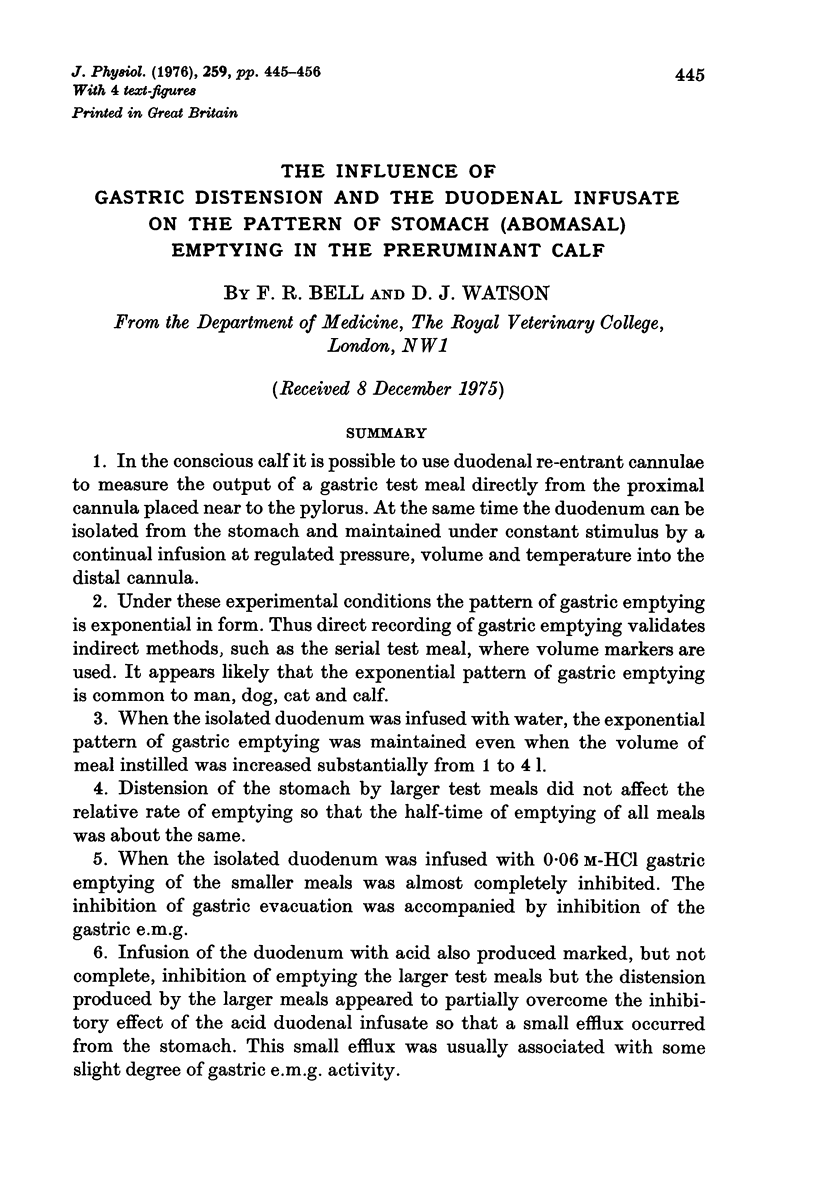
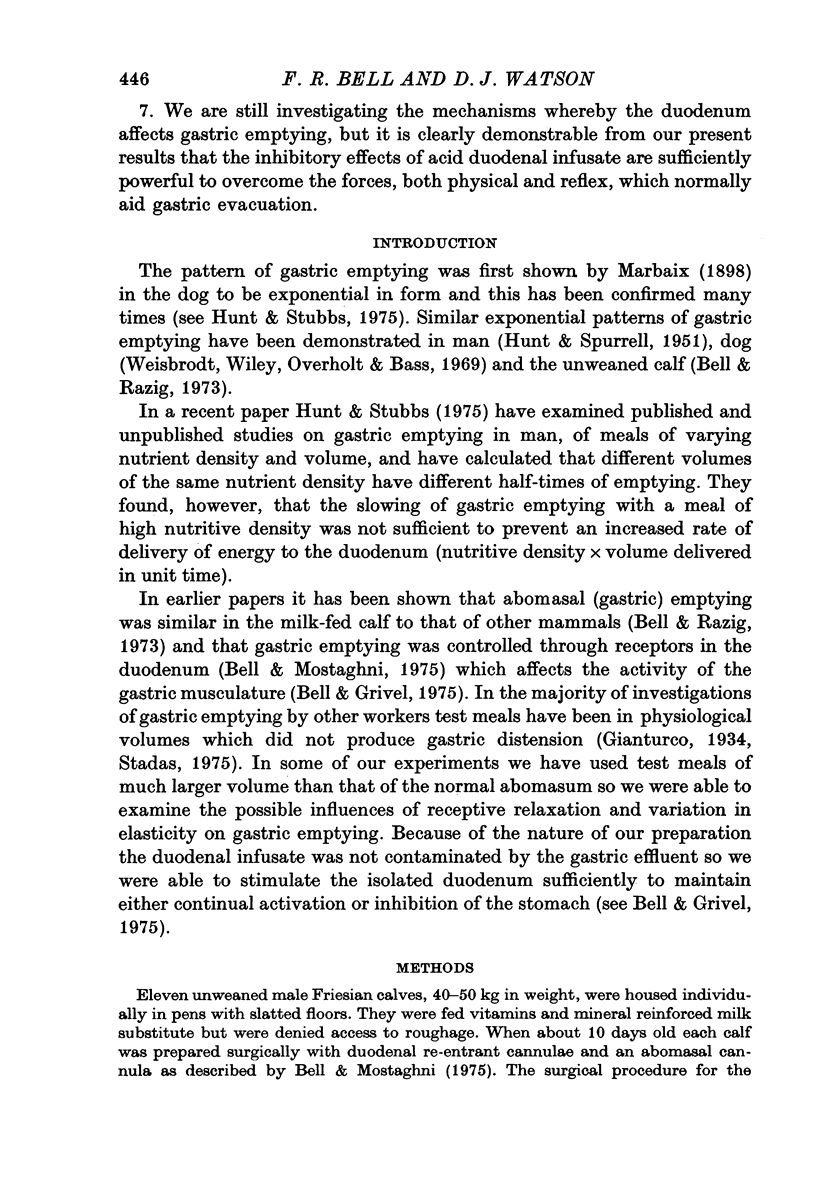
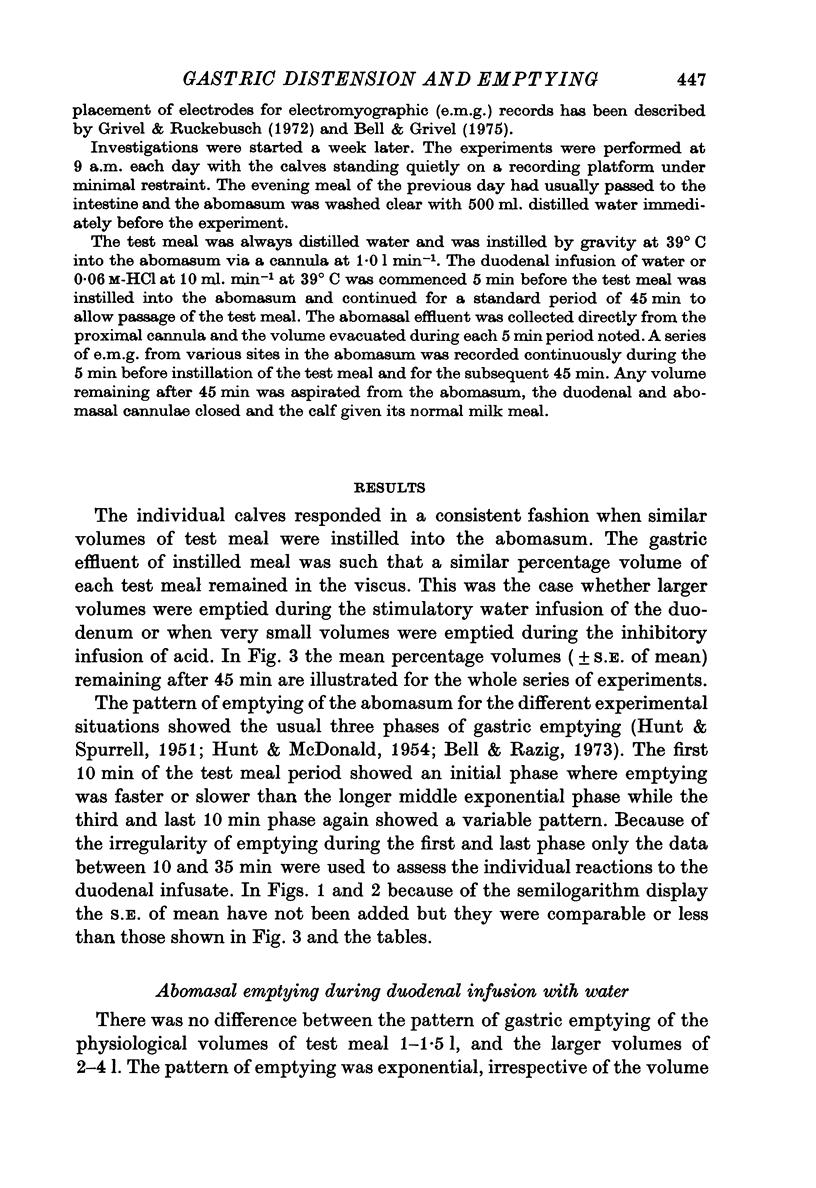
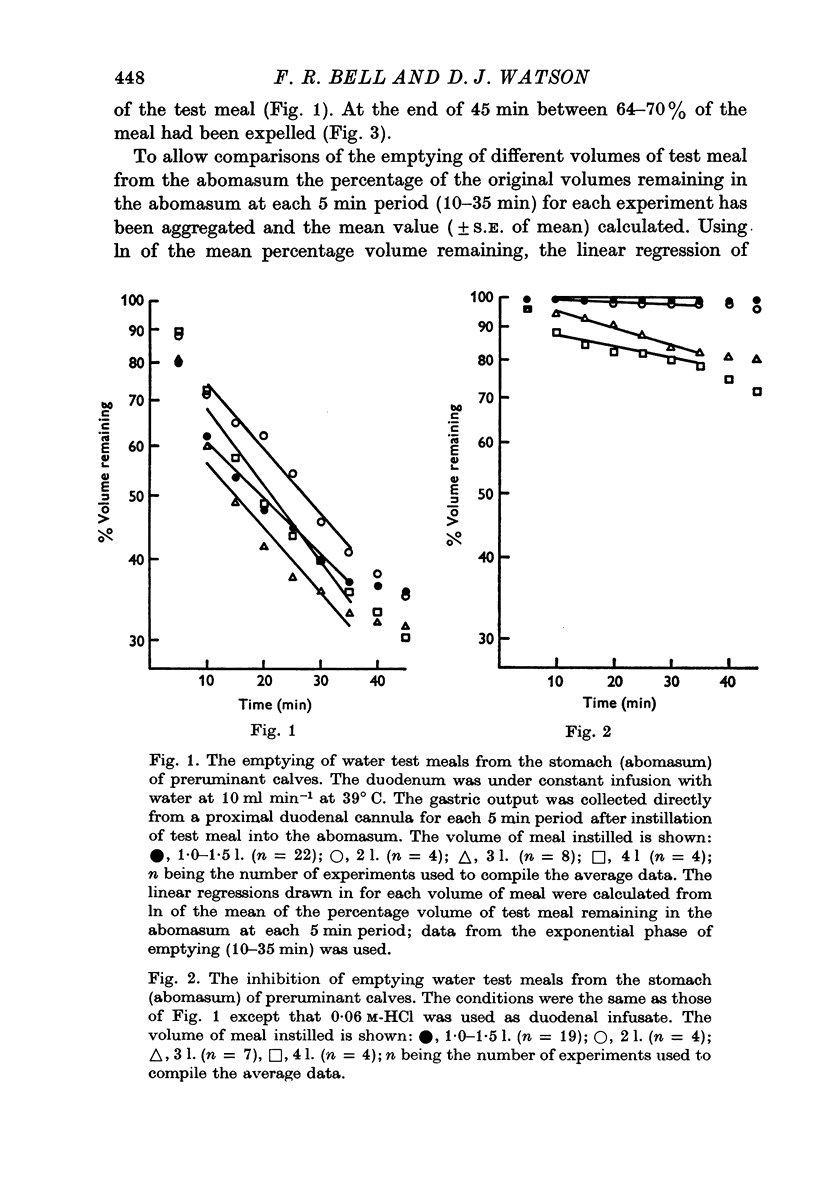
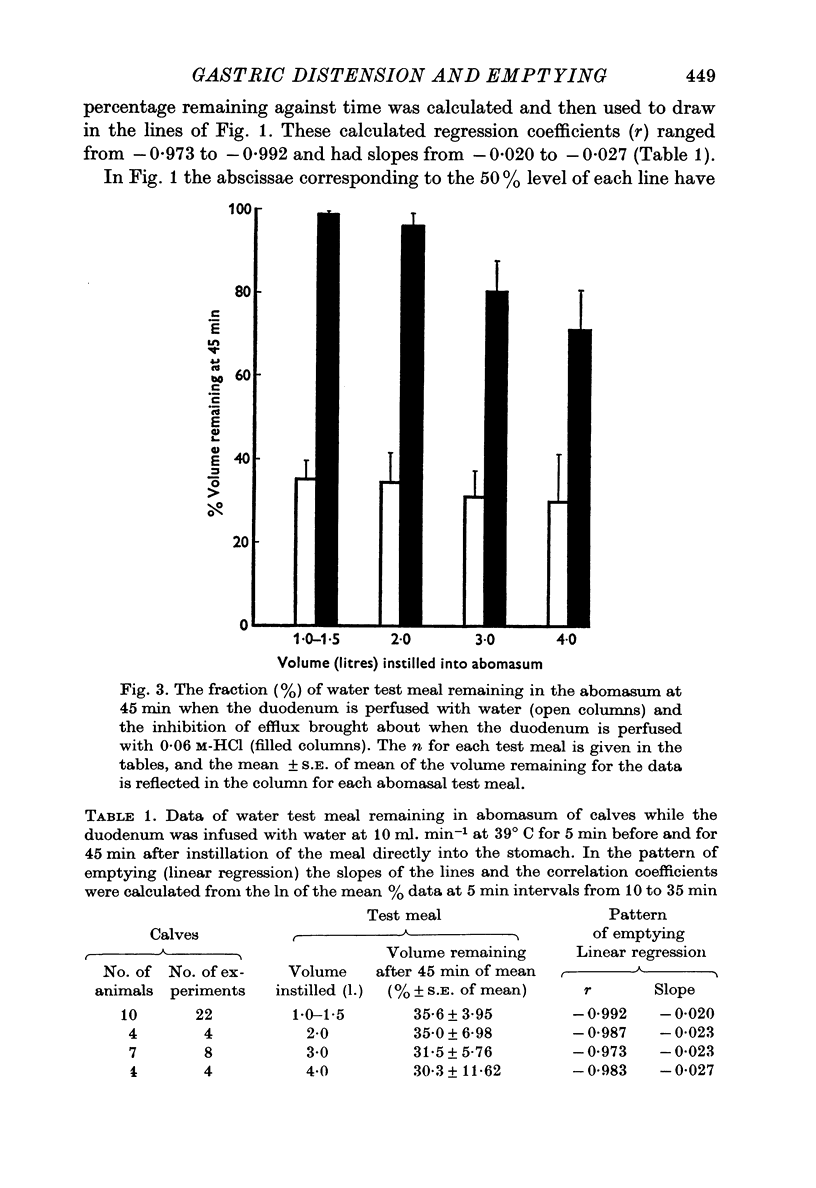
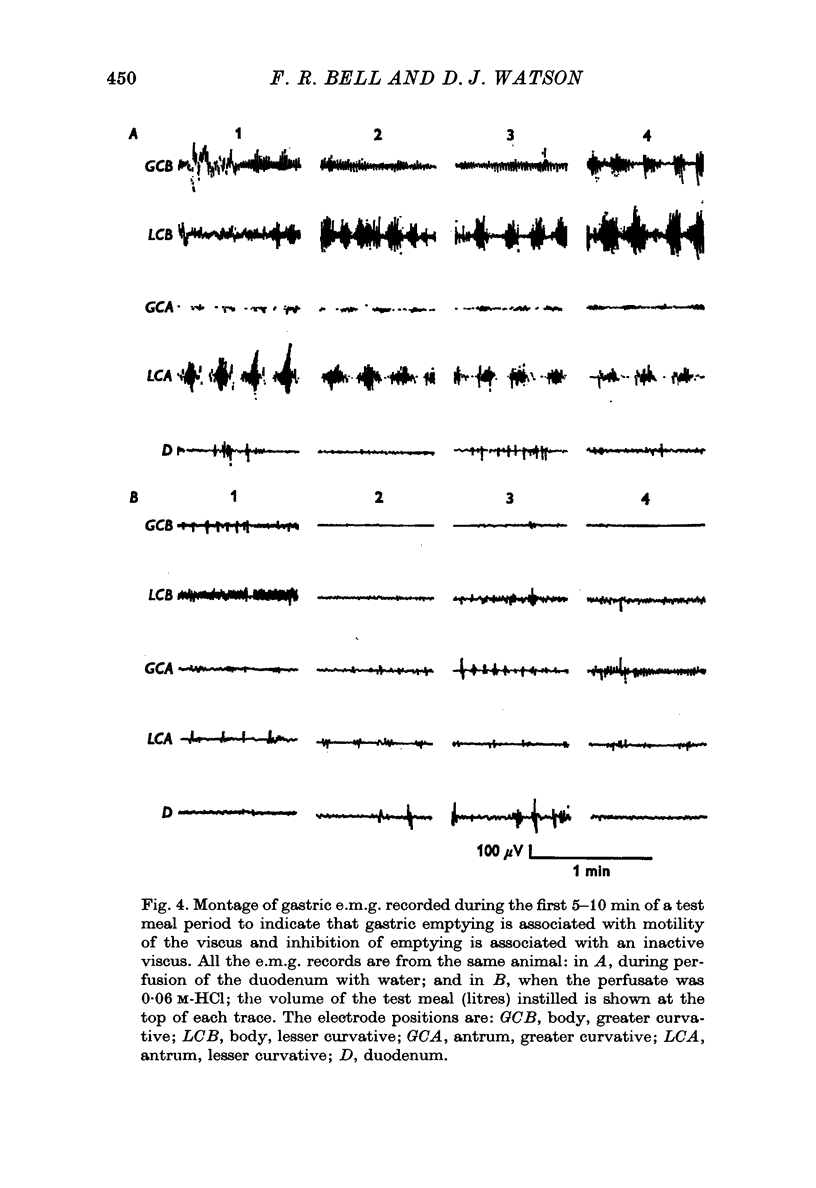
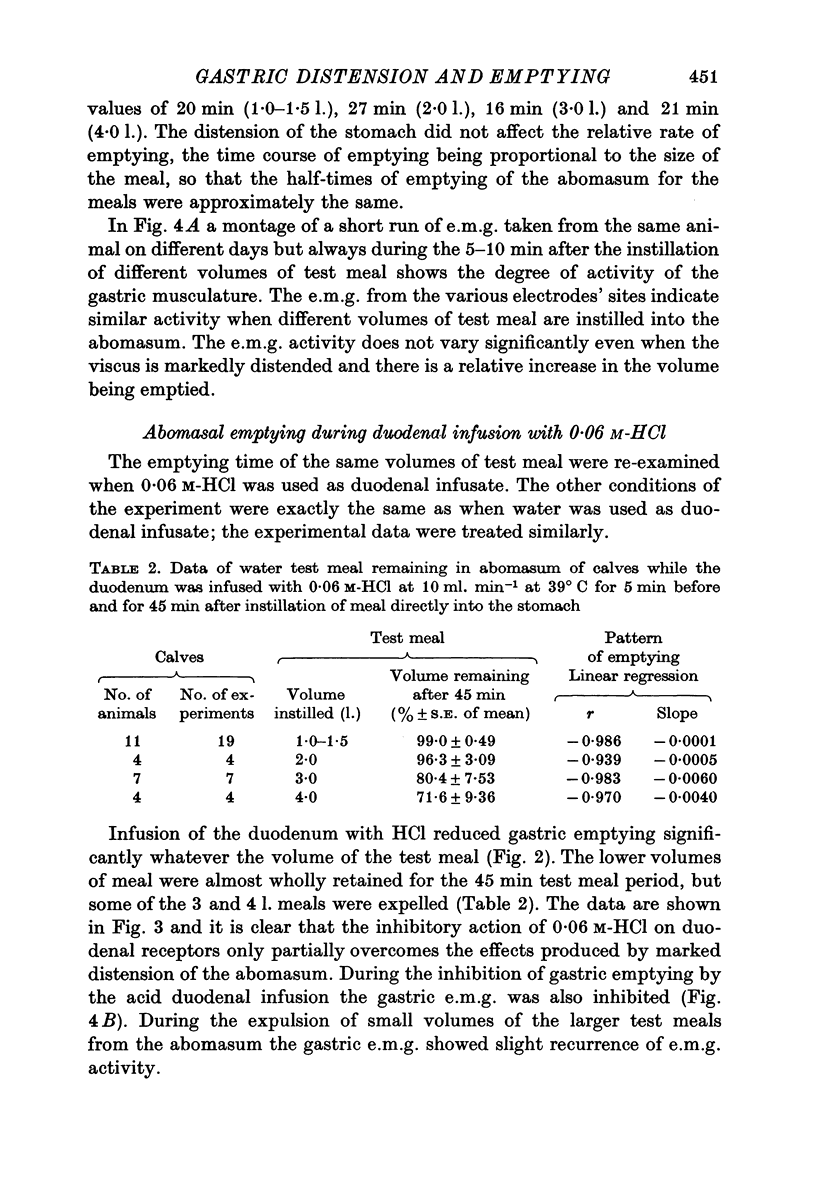
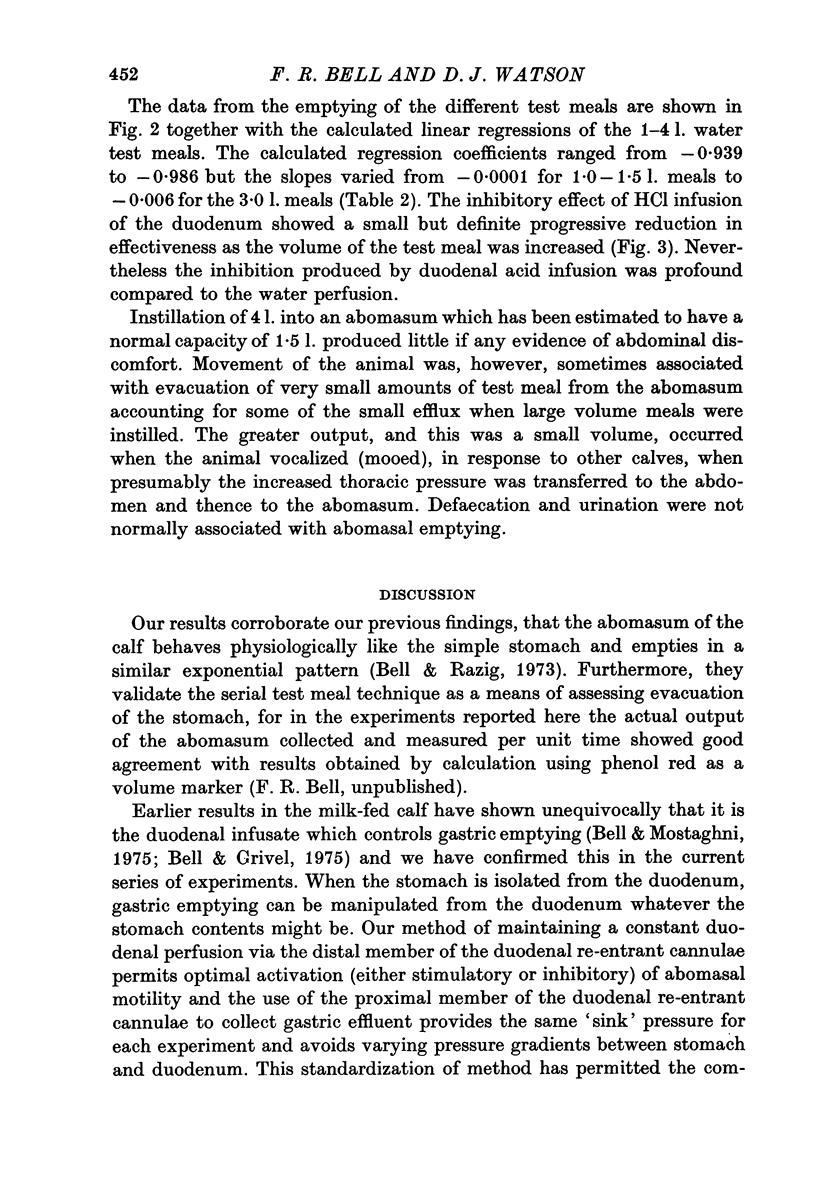
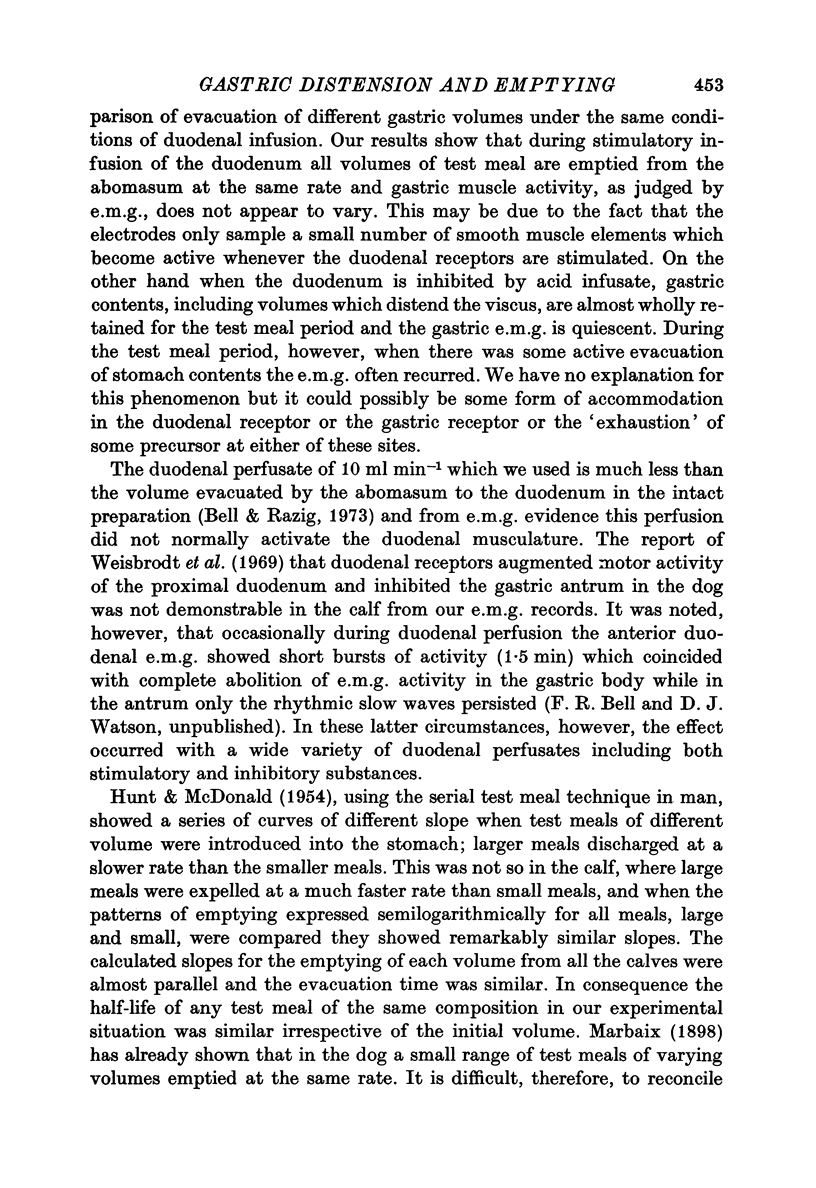
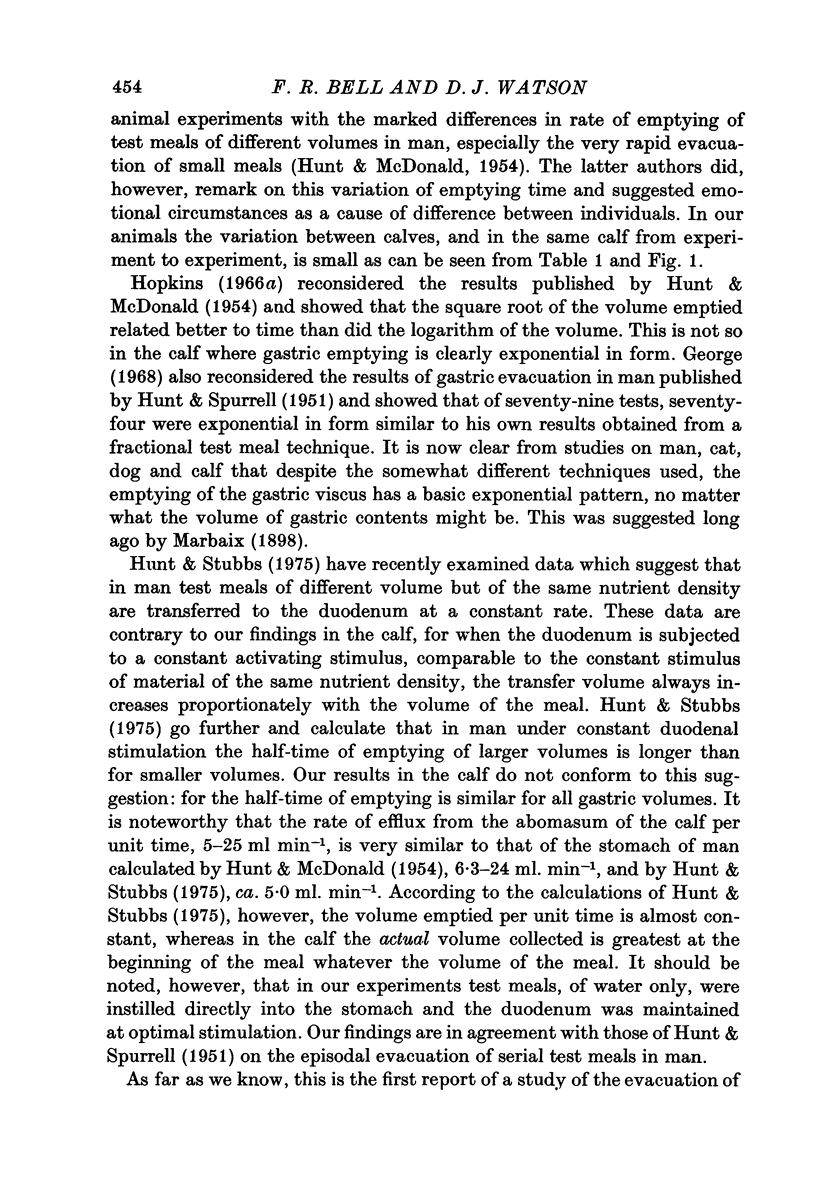
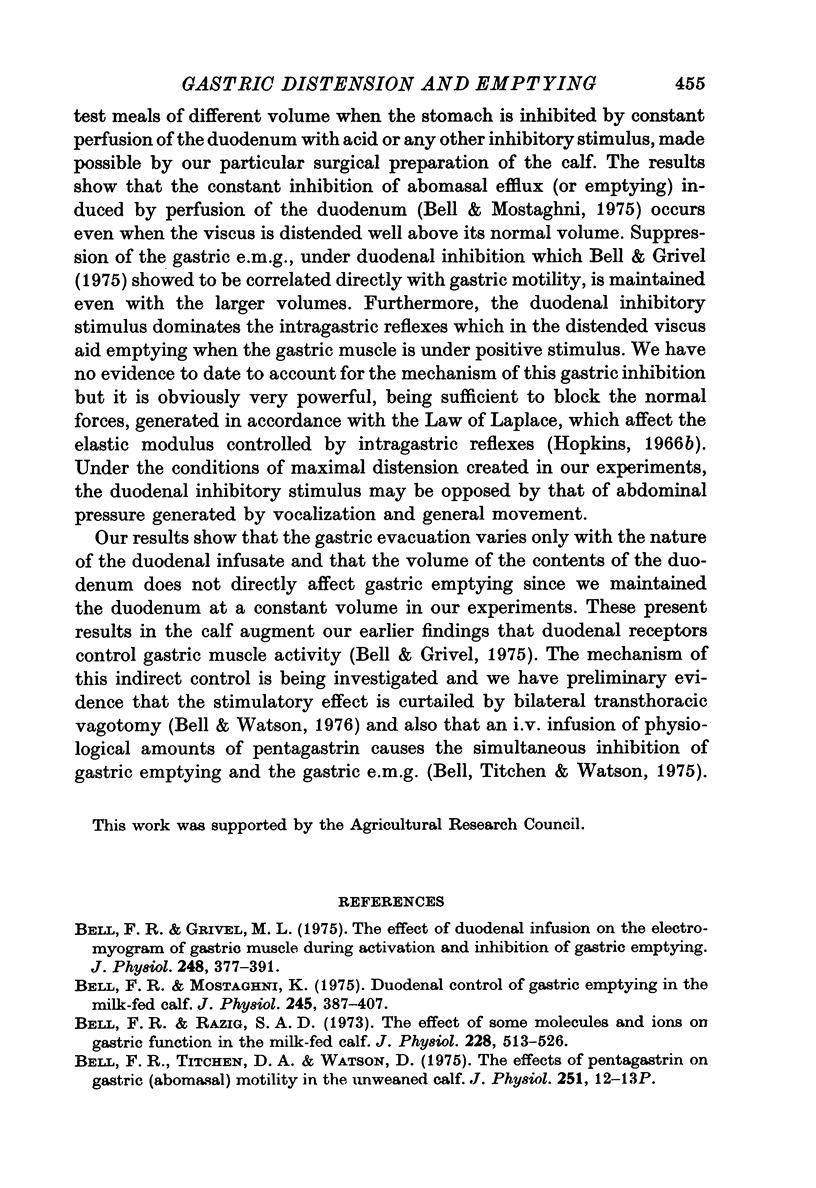
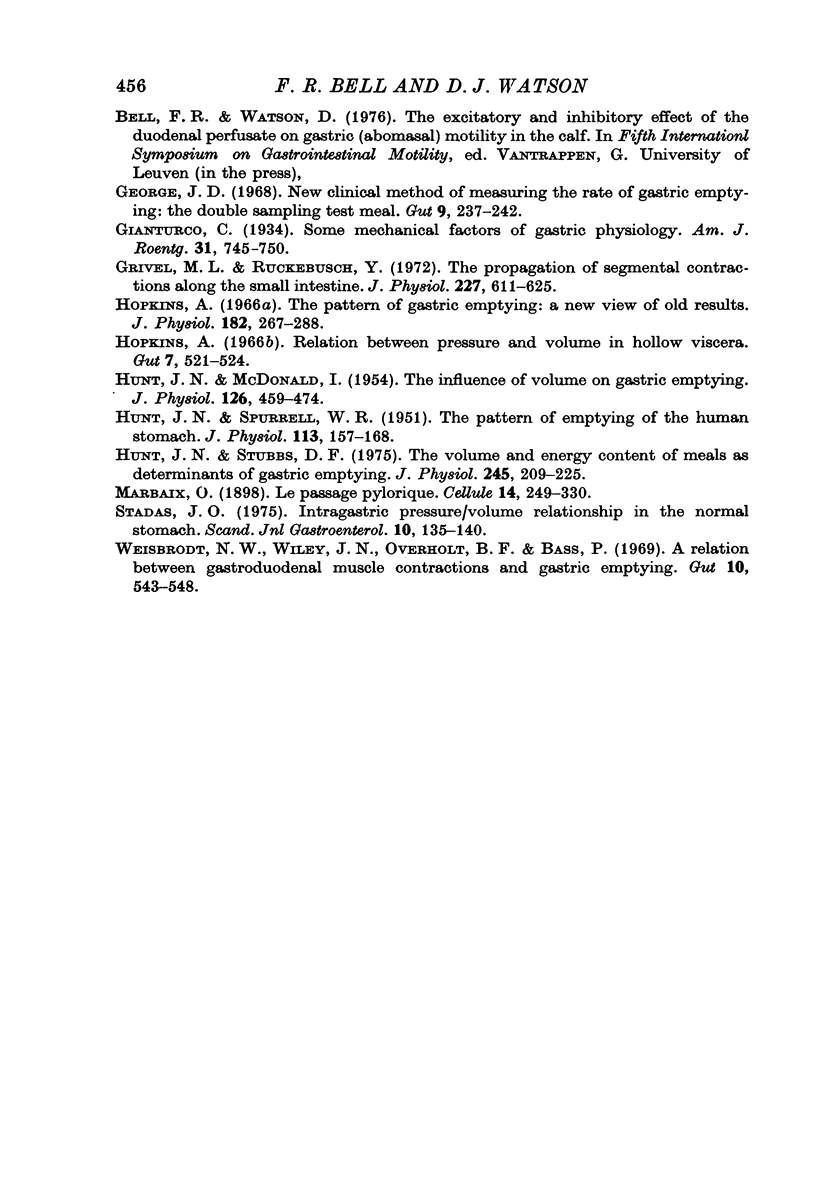
Selected References
These references are in PubMed. This may not be the complete list of references from this article.
- Bell F. R., Grivel M-L The effect of duodenal infusion on the electromyogram of gastric muscle during activation and inhibition of gastric emptying. J Physiol. 1975 Jun;248(2):377–391. doi: 10.1113/jphysiol.1975.sp010980. [DOI] [PMC free article] [PubMed] [Google Scholar]
- Bell F. R., Mostaghni K. Duodenal control of gastric emptying in the milk-fed calf. J Physiol. 1975 Feb;245(2):387–407. doi: 10.1113/jphysiol.1975.sp010852. [DOI] [PMC free article] [PubMed] [Google Scholar]
- Bell F. R., Razig S. A. The effect of some molecules and ions on gastric function in the milk-fed calf. J Physiol. 1973 Jan;228(2):513–526. doi: 10.1113/jphysiol.1973.sp010097. [DOI] [PMC free article] [PubMed] [Google Scholar]
- Bell F. R., Titchen D. A., Watson D. J. Proceedings: The effects of pentagastrin on gastric (abomasal) motility in the unweaned calf. J Physiol. 1975 Sep;251(1):12P–13P. [PubMed] [Google Scholar]
- George J. D. New clinical method for measuring the rate of gastric emptying: the double sampling test meal. Gut. 1968 Apr;9(2):237–242. doi: 10.1136/gut.9.2.237. [DOI] [PMC free article] [PubMed] [Google Scholar]
- Grivel M. L., Ruckebusch Y. The propagation of segmental contractions along the small intestine. J Physiol. 1972 Dec;227(2):611–625. doi: 10.1113/jphysiol.1972.sp010050. [DOI] [PMC free article] [PubMed] [Google Scholar]
- HUNT J. N., MACDONALD I. The influence of volume on gastric emptying. J Physiol. 1954 Dec 10;126(3):459–474. doi: 10.1113/jphysiol.1954.sp005222. [DOI] [PMC free article] [PubMed] [Google Scholar]
- HUNT J. N., SPURRELL W. R. The pattern of emptying of the human stomach. J Physiol. 1951 Apr;113(2-3):157–168. doi: 10.1113/jphysiol.1951.sp004562. [DOI] [PMC free article] [PubMed] [Google Scholar]
- Hopkins A. Relation between pressure and volume in hollow viscera. Gut. 1966 Oct;7(5):521–524. doi: 10.1136/gut.7.5.521. [DOI] [PMC free article] [PubMed] [Google Scholar]
- Hunt J. N., Stubbs D. F. The volume and energy content of meals as determinants of gastric emptying. J Physiol. 1975 Feb;245(1):209–225. doi: 10.1113/jphysiol.1975.sp010841. [DOI] [PMC free article] [PubMed] [Google Scholar]
- Weisbrodt N. W., Wiley J. N., Overholt B. F., Bass P. A relation between gastroduodenal muscle contractions and gastric empyting. Gut. 1969 Jul;10(7):543–548. doi: 10.1136/gut.10.7.543. [DOI] [PMC free article] [PubMed] [Google Scholar]


